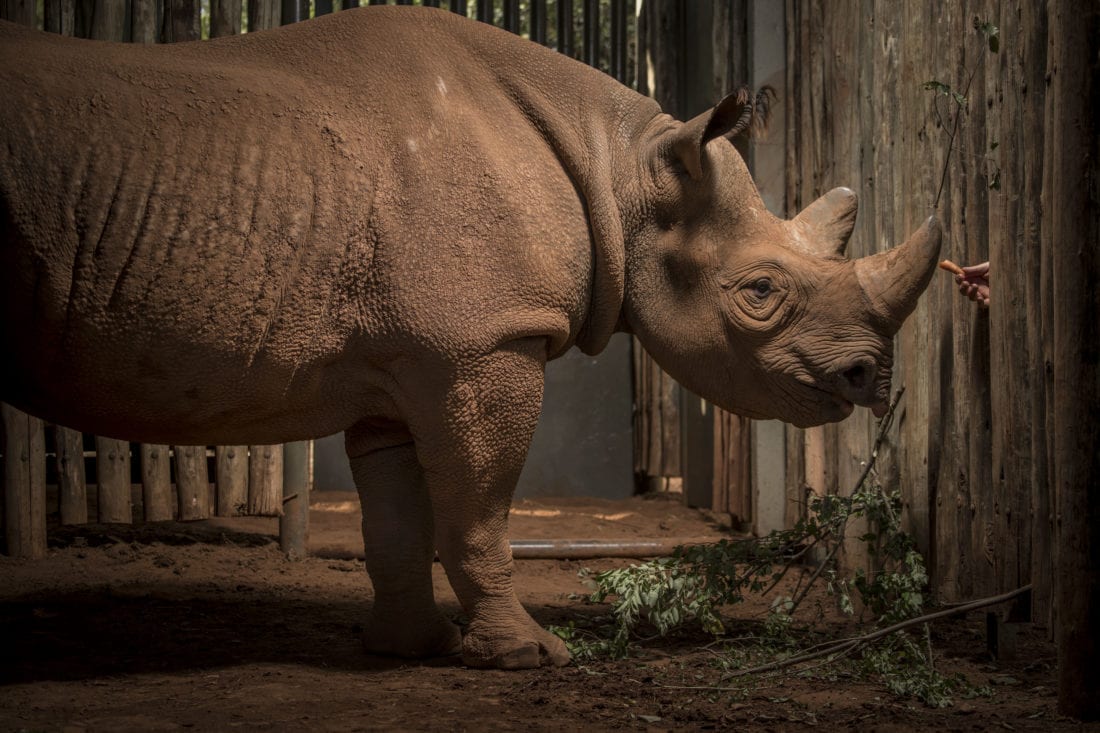Grumeti Fund Brings San Diego Zoo Rhino to the Western Serengeti
In an effort to save a critically endangered species from extinction, the Grumeti Fund has successfully completed the first phase of a far-sighted Black Rhino Expansion Project with an eight-year old eastern black rhino male safely translocated from San Diego Zoo to the Serengeti.
Grumeti Fund has successfully planned, organized and coordinated the translocation of Eric, an eight-year-old east African black rhino male, from the San Diego Zoo Safari Park to the western Serengeti. Tanzania’s newest resident, Eric, was gifted to the government and the people of the United Republic of Tanzania to bolster an important satellite population of critically endangered black rhino within the greater Serengeti ecosystem. His new home is the exclusive 350,000-acre Grumeti concession area in the western Serengeti where he will be protected and monitored by the non-profit Grumeti Fund in close cooperation with the Tanzanian Wildlife Management Authority (TAWA).

“This translocation is significant because Eric is genetically over-represented within the American zoos’ East African rhino population, yet he will play a vitally important breeding role in the wild Tanzanian population. We are hopefully going to see a lot of movement and mixing of the various satellite rhino populations in the ecosystem, where his impact on the genetics of the overall population will be crucial,” says Grant Burden, Head of Special Projects, Grumeti Fund.

photo by Ami Vitale
It took two trucks and three airplanes, across five countries to get the 2,550lb bull rhino back to his native habitat. He traveled extremely well. “Our months of preparation for Eric’s travel prepared him very well and the transport could have not gone any better,” said Steve Metzler, Henshaw curator of mammals, San Diego Zoo Safari Park. Eric arrived safely in Tanzania after an epic 68 hour journey and will reside in a rhino Intensive Protection Zone, along with another east African black rhino female. With the help of a rhino behavior specialist, he will become acclimatized and sensitized to his natural environment over the next several months.

Laikipia, the female eastern black rhino currently residing at Grumeti
Fueled by a lucrative illegal trade in wildlife products, Tanzania experienced a poaching crisis, which decimated rhino populations, and today fewer than 750 remain across the whole of East Africa, classifying the eastern black rhino (Diceros bicornis michaeli) as critically endangered on the IUCN red list.
The Grumeti Fund has had tremendous success in curbing poaching since its establishment in 2003, which has resulted in dramatic increases in wildlife numbers. Between 2003-2018, the concession experienced a fourfold increase in elephant populations and over a tenfold increase in buffalo numbers. With a strong anti-poaching presence in place and plenty of ideally-suited rhino habitat, under the co-management of the Grumeti Fund and TAWA, the Grumeti rhino expansion project is ideally positioned to meaningfully contribute to repopulation and protection eastern black rhino within the greater Serengeti ecosystem.

The Grumeti Fund will work in collaboration with the Ministry of Natural Resources and Tourism’s Wildlife Division, Tanzanian Wildlife Management Authority (TAWA), Tanzanian National Parks (TANAPA) and Tanzania Wildlife Research Institute (TAWIRI) to successfully implement and monitor this multi-phase project. The IUCN Species Survival Commission Guidelines for the in-situ re-introduction and translocation of African rhinoceros will act as the road map for this on-going translocation project.
The establishment of a viable satellite population of breeding black rhino within the Grumeti concession area by mid-2019 is expected to provide the stimulus for rhino population growth with dispersing rhino venturing out and recolonizing new territories within the greater Serengeti ecosystem.

photo by Ami Vitale
As Stephen Cunliffe, Executive Director of the Grumeti Fund, concludes, “Our ultimate goal and measure of success for the Grumeti Black Rhino Expansion Project will be to have these reintroduced rhino breeding and thriving within their natural environment to the point where they start to disperse and we see movement occurring between the various satellite rhino populations within the wider ecosystem.”
We need your help to secure the future of our black rhino expansion program!
Follow us as we tell the story of this historic move




